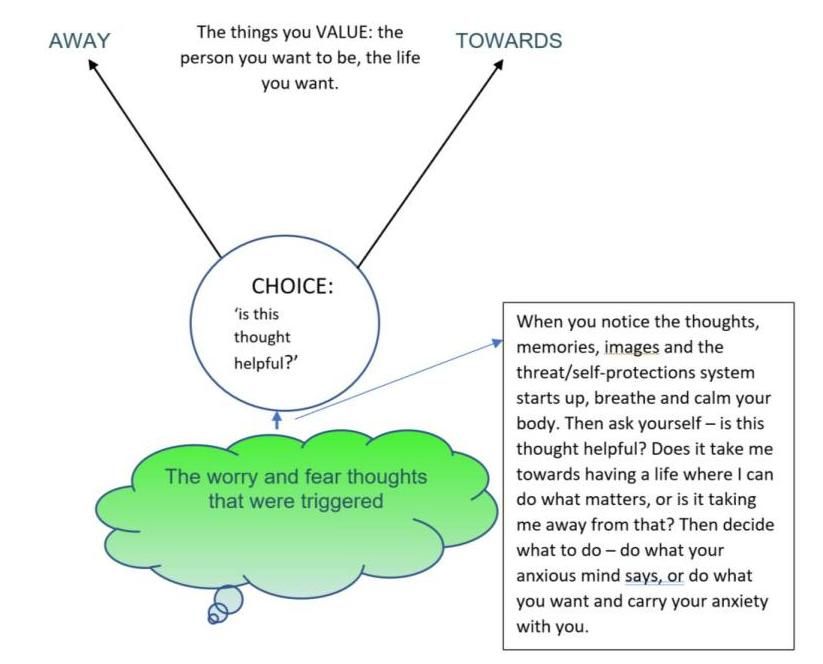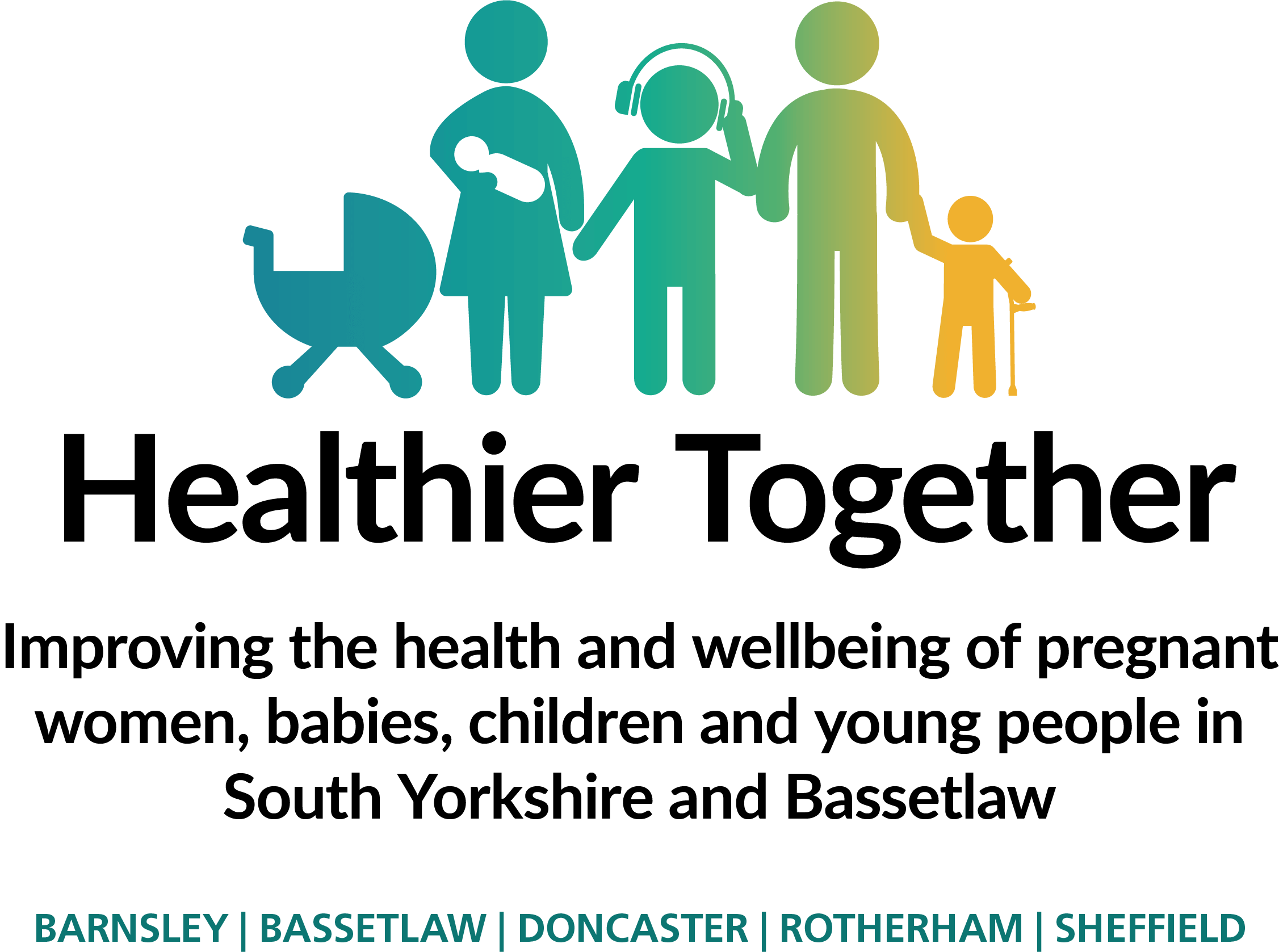Anxiety (Worry)
What is anxiety?
It is very normal for children and young people to have specific fears throughout their childhood and adolescence. Usually, these fears and worries go away on their own as your child grows and expands their experience. Anxiety is the feeling we get as part of the normal human response to danger. The danger does not have to be real or happening in the present moment, it can be worries or fear thoughts, images or memories; but our body reacts as if the danger is actually happening or is going to happen. We say we are ‘anxious’ or have ‘anxiety’ when our body goes into this threat/self-protection reaction, which can sometimes be very strong and overwhelming. The body’s threat/self-protection reaction is commonly called the ‘fight/flight/freeze’ reaction.
The fight/fight/freeze reaction
Over the millions of years that human evolution has been happening, there have been no changes to the brain or body in the last 30,000 – 100,000 years. Imagine what the world would have looked like then and the dangers we faced. We were not the strongest or fastest species and yet we managed to keep safe and not be killed before having children. This is because we developed a highly sensitive threat-detection system that was constantly scanning the environment and was ‘switched on’ 24/7. It worked on a ‘better safe than sorry’ principle. It was better to think “That brown shape in the grass IS a lion”, than to think it was a rock. If you thought it was a rock and you were wrong – you were almost certainly lion lunch! If you thought it was a lion and it was a rock – you’d get home safely for lunch.
We don’t lose what has helped us to survive, so our threat/self-protection system still operates in this way, even though there are fewer daily life-threatening dangers. The problem is, it means that we are always on the ‘look out’ for danger, for things that could go wrong, or terrible things that could happen. This does not have to be threats to our physical safety, it could also be threats to our self-esteem – worries about the future, that others may not like us or will judge us badly, or that we will fail in some way.
Many fears are ‘hard-wired’ into our development as they helped to protect us. Babies have a fear of separation from birth, and develop a fear of heights when they start to crawl. Teenagers develop a strong fear of rejection or disapproval from peers as they are at an age when belonging to a social peer group as part of tribe formation was essential to their survival. These fears still remain.
When someone worries or fears that something may happen, or remembers something bad that happened, the nervous system in the body reacts. This happens, even if the ‘danger’ is not present but is a thought, image or memory. This diagram shows what happens in the body when the threat/self-protection reaction is activated:
The Human Safety System:
This is why children commonly experience physical symptoms such as their heart racing, dizziness, breathlessness, nausea and stomach pains when they feel anxious. Click here to help explain to your child why they are experiencing these feelings.
How is the mind involved?
The mind/brain has evolved over time. Our automatic, life supporting systems developed first and this included the threat self-protection system. In mammals this was followed by the soothing system. The soothing system is about care and nurture, which is needed for babies that are dependent on a caregiver for a relatively long time. The last part of the brain to develop is called the ‘neo cortex’ the new part of the brain. This is what we call the ‘grey matter’ – the part of the brain that is involved in more complex functions, such as language and communication, planning and reasoning, abstract thinking, consciousness, and importantly it is where empathy and compassion are. Empathy and compassion are needed to engage in helpful social behaviour in order that we survive together, because we need each other.
Why do we lose control of our emotions?
When the threat self-protection system is activated, and if it goes into fight/flight/freeze, it is important that this old part of the brain (focused on survival) is disconnected from the new brain, as this would slow down our reactions to threat and decrease our chance of survival. Here is a helpful video that explains why we lose control of our emotions.
https://www.youtube.com/watch?v=3bKuoH8CkFc
How to manage anxiety
You can see from the diagram that the ‘Soothing’ system is part of the overall ‘safety’ system. You CAN’T stop your thoughts that caused the anxiety, and you CAN’T stop your body from reacting to them. To manage anxiety, the first thing to do is to notice the change in the body and then focus on calming the body’s threat self-protection reaction using these simple strategies:
BREATHE: Breathe in for a slow count of 4 and breathe out for a slow count of 6.
COME to YOUR SENSES: find and focus on:
5 things you can see
4 things you can hear
3 things you can touch
2 things you can smell
1 slow, deep breath
When you feel calmer CHOOSE: whether the thought/s is helpful or unhelpful:

The workbooks on this page offer an evidence-based approach to overcoming anxiety. Being able to calm the body’s threat/self-protection system, choose how to respond and expand your experience and comfort zone are the key steps. These self-help programmes should be completed at the ‘AMBER’ level – see below.
Make Mindfulness your superpower
Mindfulness is the basic human ability to be fully present, aware of where we are and what we’re doing, and not overly reactive or overwhelmed by what’s going on around us.
While mindfulness is something we all naturally possess, it’s more readily available to us when we practice on a daily basis. Daily practice will improve your ability to NOTICE anxious thoughts and worries and the early physical signs of the body’s threat/self-protection reaction.
Whenever you bring awareness to what you are directly experiencing via your senses, or to your state of mind via your thoughts and emotions, you’re being mindful. And there’s growing research showing that when you train your brain to be mindful, you’re actually remodelling the physical structure of your brain.
The goal of mindfulness is to become conscious of the inner workings of our mental, emotional, and physical processes.
Here is a video on why mindfulness empowers us
Here is a link to some video resources



